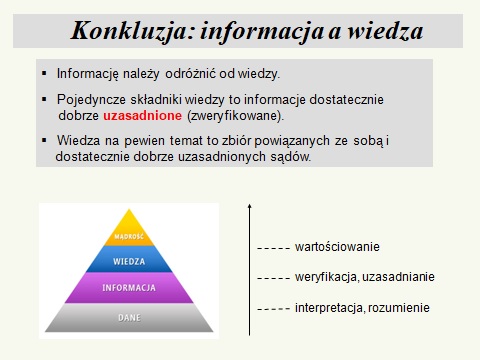Niniejszy wpis kieruję przede wszystkim, choć nie tylko, do studentów wydziału WEiTI Politechniki Warszawskiej, z którymi mam obecnie zajęcia filozoficzno-informatyczne.
W trakcie tych zajęć poruszyliśmy problem, który był dyskutowany na blogu już kilkukrotnie (zob. np. tutaj), ale wciąż wydaje mi się wart dalszej rozmowy. Chodzi o metodologiczną przydatność pojęcia algorytmu – pojęcia, które znamy przede wszystkim z informatyki.
Czy algorytmizacja, a więc jakiegoś rodzaju schematyzacja i automatyzacja, są w nauce czymś pożądanym? Czy wiedza zapisana, ale także przekazywana, w postaci algorytmicznej, może stymulować rozwój nauki? A może jest inaczej: zbytnia algorytmizacja powoduje, że w nauce i edukacji zaczyna brakować inwencji i kreatywności?
Można też spytać szerzej: czy podejście algorytmiczne, które przeniknęło do naszej kultury głównie za sprawą wynalazku komputera, wywiera jakiś istotny wpływ na tęże kulturę – wpływ pozytywny lub negatywny? Mam tu na myśli kulturę pojętą całościowo, a nie tylko technicznie…
Bardzo proszę o swobodne wypowiedzi nawiązujące do powyższych pytań; poza które można oczywiście wykraczać :).
Jako lektury wprowadzające do dyskusji proponuję:
— tekst Donalda Knutha o roli algorytmów w informatyce
— tekst Pawła Stacewicza o metodzie algorytmicznej
Oto kilka zaczerpniętych z tych prac cytatów:
Knuth:
Być może największym odkryciem będącym rezultatem wprowadzenia komputerów okaże się to, że algorytmom, jako przedmiotom badania, przysługuje niezwykłe bogactwo interesujących własności oraz to, że algorytmiczny punkt widzenia jest użytecznym sposobem organizacji wiedzy w ogólności.
Knuth:
Zacytujmy ponownie George’a Forsythe’a: „Najbardziej wartościowym elementem edukacji naukowej czy technicznej są służące ogólnym celom narzędzia umysłowe, które będą służyły przez całe życie. Szacuję, że język naturalny i matematyka są najważniejszymi takimi narzędziami, a informatyka stanowi trzecie narzędzie” (Forsythe 1959).
Knuth:
Próba sformalizowania czegoś w postaci algorytmu prowadzi do głębszego zrozumienia niż ma to miejsce, gdy po prostu próbuje się daną rzecz pojąć w sposób tradycyjny.
Stacewicz:
Można pokusić się nawet o stwierdzenie, że dana dyscyplina uzyskuje postać dojrzałą wówczas, gdy powstaje w jej obrębie pewien schematyczny rachunek pozwalający z powodzeniem stosować metodę algorytmiczną.
Stacewicz:
Do zalet metody algorytmicznej, należy niewątpliwie wiedzotwórczość, która przejawia się na dwóch poziomach: a) każde zastosowanie algorytmu do nowych danych skutkuje nową wiedzą (rozwiązaniem nowego problemu), b) trafnie dobrany zbiór algorytmów ułatwia penetrację danej dziedziny na nowym jakościowo poziomie (na niższym poziomie dokonała się już automatyzacja).
Serdecznie zapraszam do rozmowy, w której oczywiście sam chętnie wezmę udział.
Paweł Stacewicz.

